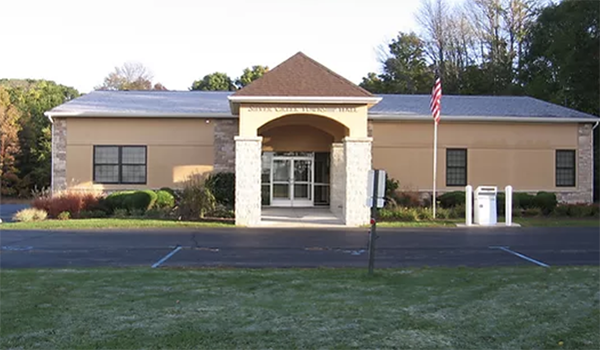Director pays tribute to Hunt
Published 7:00 am Tuesday, May 10, 2011
Charles R. Loving at SMC May 9
Charles R. Loving, director and curator of the George Rickey Sculpture Archive at the Snite Museum of Art, University of Notre Dame, is writing a book about Richard Hunt.
Hunt, from Chicago, created Active Hybrid, second in Dowagiac’s Dogwood Fine Arts Festival collection of public art beside M-62 in Mill Pond Park since 1997.
Loving lectured at Southwestern Michigan College Monday night to cap Visual Arts Day along with a gallery exhibit of work by Texan Bob Guelich, whose Touching Earth II eagle was unveiled in Burke Park midday as No. 13.
Loving could have been reading from his draft about Hunt when he assessed, “He’s an important American and world sculptor, and important artists are very much aware of the history of art preceding them,” such as open-form sculpture and abstract expression, where there’s a great sense of experimentation, play and process in the creating of a work of art — and also honesty in materials. There’s no attempt at illusion” when you sculpt with aluminum car bumpers, old lamps and other “industrial material.”
“Before abstract expressionist paintings, it was very important that a work of art look like something in the real world,” Loving said.
Active Hybrid reflects Hunt’s interest in African metalsmithing and displays “wing forms, branches, tendrils — all things that suggest growth and aspiration, which are lifelong themes of Richard Hunt. He’s a very positive artist. Much contemporary art is very cynical. Richard Hunt is unusual in that his art is about personal growth” and often features steps or ladders.
“Since beginning his peregrination, or wandering journey, as a sculptor over 50 years ago,” Hunt “has become a pre-eminent American sculptor at the apex of a prolific and successful career. His evocative works are immediately recognizable for their fusion of the manmade and the natural, melding the gritty muscularity of America’s industrial urban environment with a passion for natural forms.
“When I write about Richard Hunt, I think it’s important we all know he’s from a great industrial city, Chicago, which was very much a part of his ethos and vision. Its architecture celebrated steel.
“Richard Hunt’s sculptures combine European modernism with the art of African blacksmiths and blends Western mythology with African-American literary and musical traditions. Drawing from such broad and diverse sources, his sculptures resonate with multiple layers of meaning,” like his tribute to Dr. Martin Luther King placed in Memphis in 1977.
“Public art is a product of transformation, improvisation and regeneration,” Loving said, “firmly rooted in multiple histories and traditions and always moving forward in positive ways.”
Tuck Langland, creator of No. 1 Dance of Creation (1995), No. 3 Resting Dancer (1999) and No. 12 Away I Go (2010), attended, as did John Mishler, No. 8 Wind Song (2009).
Langland said, “The parallels between the two may look apparent, but an abstract expressionist painting you can pick up a brush and go,” he slashes at the air.
“Not so with chunks of steel, which need to be bent, ground, hammered, welded and forged. It’s like abstract expressionism in extreme slow motion. For Richard Hunt to create that feeling of spontaneity that a quick brush stroke does out of those forms is one of the most remarkable things about his work.”






